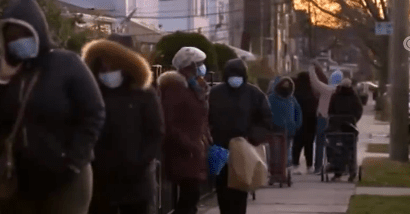U.S. Relief Organization: The epidemic has sharply reduced the income of most families in the United States, and the food shortage will continue
Affected by the COVID-19 epidemic, the number of people in the United States who need to live on relief food has increased significantly this year.
According to Feeding America, the largest hunger relief organization in the United States (also literally translated as Feeding America), more than 54 million people in the United States lacked enough food in 2020, and this situation will continue in the next year.
Babino Fontenoth, CEO of “America”, said that the COVID-19 epidemic has greatly reduced the income of many families in the United States. 40% of the people who went to the “food bank” to receive relief food this year were first to receive relief. The number of “food insecure” people increased by 17 million compared with the pre-epidemic.
She also pointed out that the hunger problem faced by ethnic minorities such as people of African descent is more serious. According to estimates, 18 of the 25 counties with the highest food shortage rate in the United States have a major population of African descent.

In the Bronx, New York City, which is dominated by African- and Latino populations, the head of the local Food Bank said that the number of people who need to receive food is now twice as many as before the epidemic, many of them are “new faces”.
Babino-Fontenot also said that this situation will continue in the coming year, and the amount of food their relief organization can provide is still facing a huge gap of about 8 billion meals compared with the demand.



